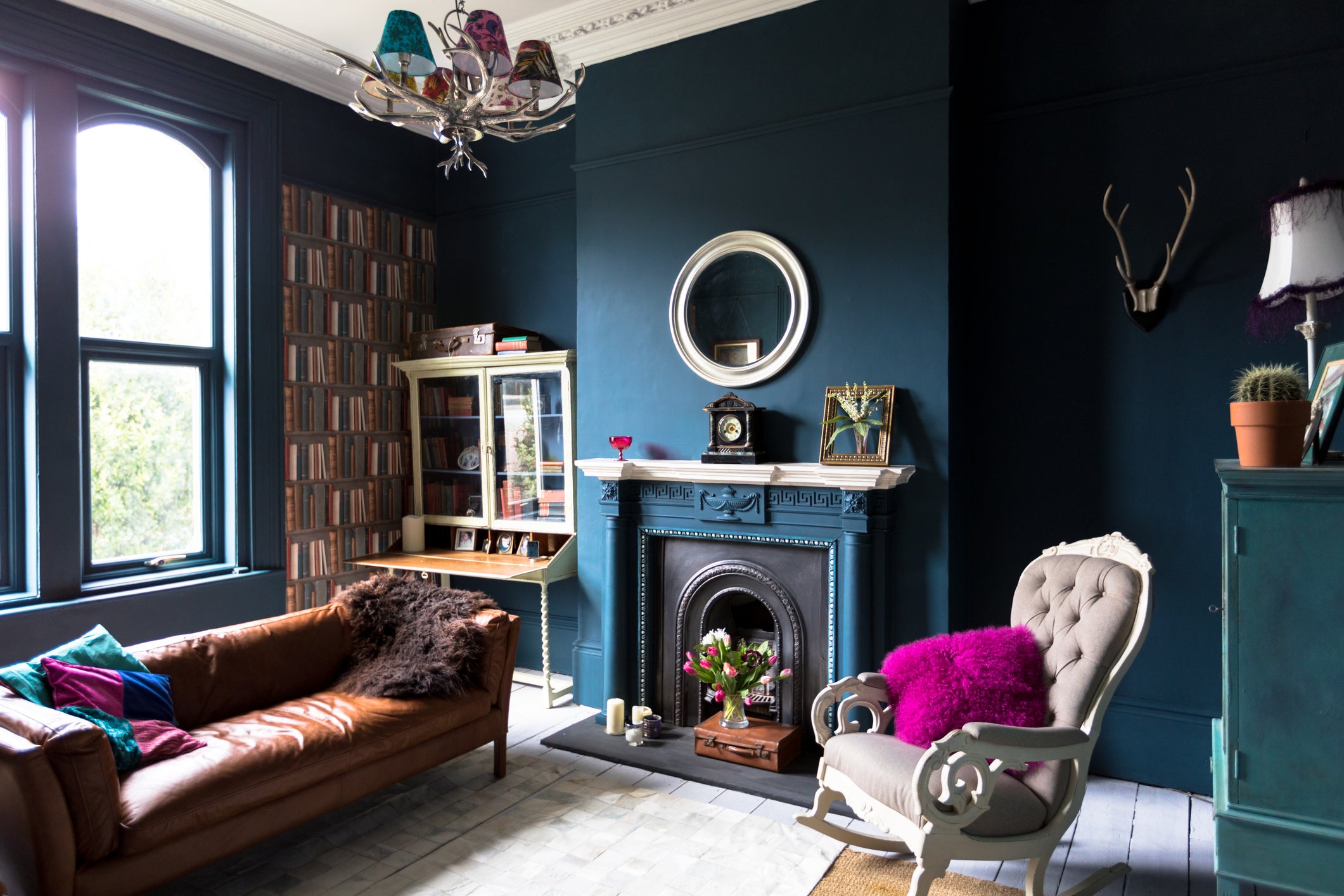The colours you paint your walls can impact your mood, and here’s the science to prove it
Roses are red, violets are blue, painting your walls the right colour can do wonders for you

Your support helps us to tell the story
From reproductive rights to climate change to Big Tech, The Independent is on the ground when the story is developing. Whether it's investigating the financials of Elon Musk's pro-Trump PAC or producing our latest documentary, 'The A Word', which shines a light on the American women fighting for reproductive rights, we know how important it is to parse out the facts from the messaging.
At such a critical moment in US history, we need reporters on the ground. Your donation allows us to keep sending journalists to speak to both sides of the story.
The Independent is trusted by Americans across the entire political spectrum. And unlike many other quality news outlets, we choose not to lock Americans out of our reporting and analysis with paywalls. We believe quality journalism should be available to everyone, paid for by those who can afford it.
Your support makes all the difference.You walk into a room that’s been painted a deep, ocean blue and immediately feel a sense of calm wash over your entire being.
It may be a coincidence that your emotions seem to perfectly mirror the serene hue of the walls of the room that you’re standing in.
However, it could also be down to the scientific impact that certain colours have on your mood.
Taubmans, a paint company in Australia, partnered with virtual reality company Liminal VR and a team of psychologists and neuroscientists to carry out a study exploring how the colour of a room and a person’s emotions are connected.
The study was conducted in collaboration with the Florey Institute of Neuroscience and Mental Health in Melbourne, a leading brain research facility.
745 participants were given Google Daydream virtual reality headsets, on which they were shown five colours from the Taubmans paint range in three different types of room.
After being shown each colour, the participants were then asked to describe how they felt by selecting one of eight emotional responses, which included emotions such as “excited”, “cheerful” and “tense”.
They were also asked to state how much they liked the colour that they’d been shown using a five-point scale.
The researchers discovered that pastel colours such as light green, lilac and blue were likely to make the participants feel calm, while brighter colours such as yellow, orange and pink made them feel more upbeat and excitable.
While it may seem like a trendy choice to paint the walls of a room in your home a dark colour, the study concluded that doing so may make you feel sad.
However, if done right, painting a specific wall or area of your home a dark colour doesn’t have to have a negative impact on your mood.
“Using darker colours can make a room appear smaller, so make sure this is taken into consideration,” says colour consultant Grace Garrett.
“An entrance, a powder room or bathroom are ideal spaces for implementing a dark feature colour.
“These are spaces you don’t spend a lot of time in but can create a striking impact without having to be surrounded by it for long periods of time.
The use of the virtual headsets allowed the researchers to accurately assess the emotional responses of the participants, as Damian Moratti, CEO of Liminal VR, explains.
“It was amazing working on the Taubmans Colour Emotion Study - nothing of this scale and scope had ever been attempted before,” he says.
“Luckily, the data returned some fantastic results, showing that people were genuinely emotionally affected by many of the colours in the Taubmans range, and different environments had a huge influence on our emotional responses to colour.”
While assumptions have been made in the past about how various colours may affect your emotions, this study delved into the science behind these claims.
Professor Julie Bernhardt, principal research fellow at the Florey Institute of Neuroscience and Mental Health, explains how the research team were able to analyse the emotional responses of the participants by utilising virtual reality.
“The issue of colour is particularly important in public spaces and as a neuroscientist, the challenge is studying colour within contextual environments,” she says.
“By using VR in the Taubmans Colour Emotion Study, we were able to create environments that our brains find ‘real’ which is more convincing than static pictures.
“Partnerships between science and industries such as Taubmans paints and Liminal VR are exciting and show that together we can do more to discover knowledge that can help us make evidence-informed decisions about colour in a multitude of settings."
Join our commenting forum
Join thought-provoking conversations, follow other Independent readers and see their replies
Comments